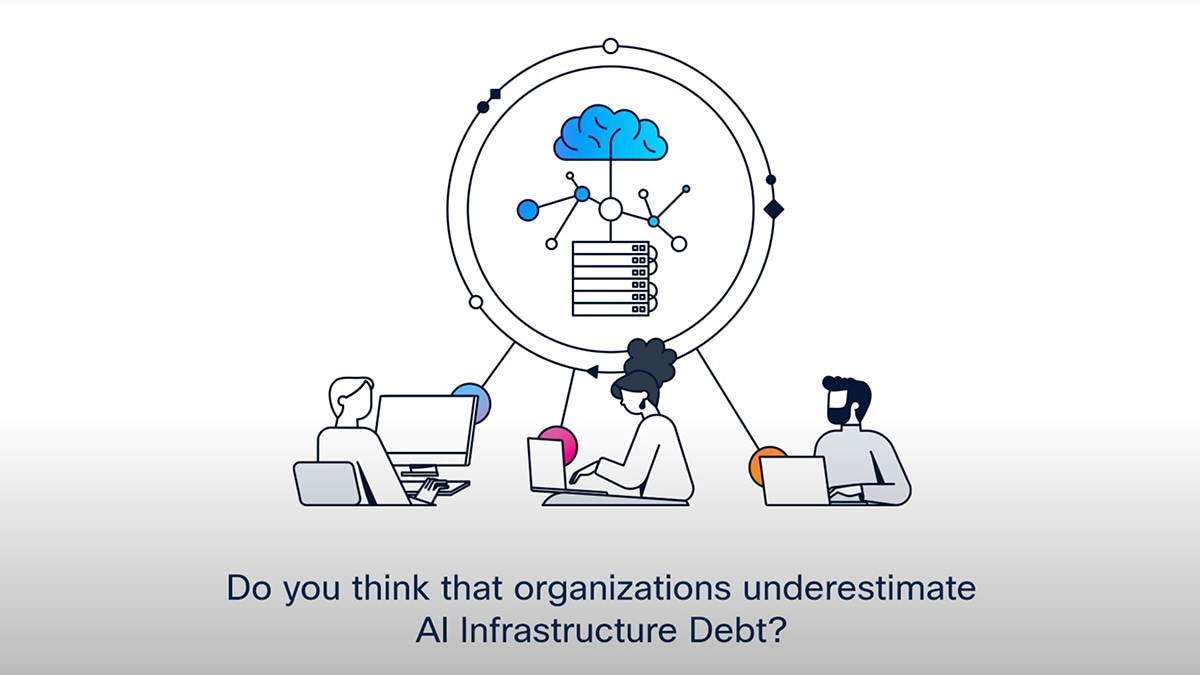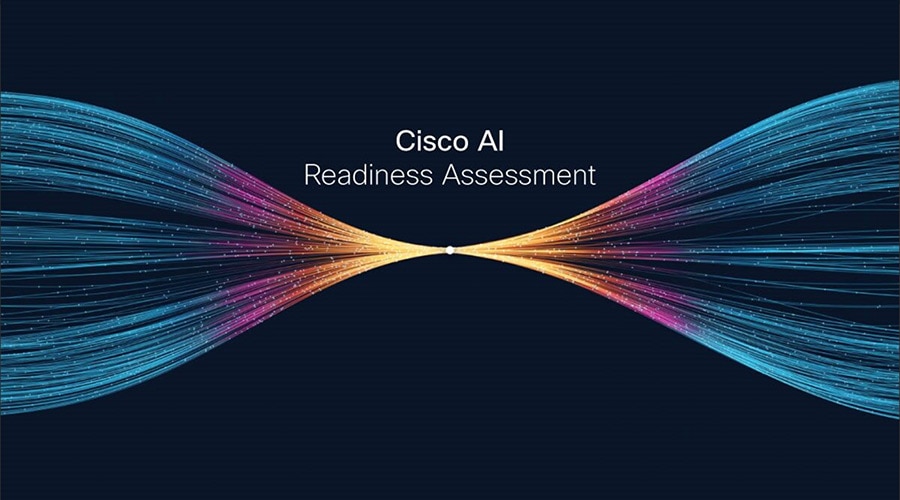To capture value from AI, you need bold ambitions and strong foundations. And the Pacesetters have both.
The Cisco AI Readiness Index reveals a small but consistent group of companies — the “Pacesetters,” about 13% of organizations worldwide for the last three years — outperform everyone else across every measure of AI value.
What does this mean for value?
Pacesetters are 4x more likely to move AI pilots into production, and 50% more likely to report measurable value from AI.
So with 82% of organizations feeling the urgency to deliver a return on AI rise in the last 6 months, readiness could be the key to delivering it.
Follow the Pacesetters. They know how to translate readiness into action and value.
Most chase value — Pacesetters capture it
Pacesetters
95%
Global
32%
They don’t guess – they measure
Almost every Pacesetter measures value vs 32% overall. You can’t capture value if you don’t track it — Pacesetters do.
Pacesetters
77%
Global
18%
They move from pilot to production
While 18% of companies have finalized use cases, three out of four Pacesetters have moved them into production. Pacesetters aren’t stuck in pilots — they execute.
Pacesetters
70%
Global
34%
They trust their AI to pay off
70% of Pacesetters are confident their AI use cases will make money, compared to just a third overall. Readiness helps breed confidence — and confidence helps drive returns.
AI is paying off — and Pacesetters are pulling ahead
60%
Pacesetters see bigger returns
60% of companies report profitability and revenue gains — for Pacesetters, it’s over 90%.
Pacesetters prove readiness helps deliver real financial impact.
53%
Pacesetters expect more, sooner
53% of companies expect revenue growth within a year, compared to 79% of Pacesetters.
Pacesetters plan for higher returns with confidence.
51%
Revenue first, savings later
Half of companies are prioritizing cost savings in 2–3 years, roughly the same for Pacesetters.
AI is still being framed as a growth driver first — even among the leaders.
AI value goes further: smarter work, better experiences, new possibilities
Pacesetters
92%
Global
65%
Teams are working smarter
AI is helping lift productivity and helping people collaborate better. It’s about efficiency and helping people to do more, faster.
Pacesetters
90%
Global
67%
Customer experience is improving
AI is helping make interactions more personal and responsive. The earliest visible wins are happening at the front line.
Pacesetters
91%
Global
64%
Innovation is accelerating
AI is sparking new processes, capabilities, and products. Pacesetters are running faster and opening up entirely new paths to growth.
Use cases are in motion, but confidence sets leaders apart
For all surveyed companies and Pacesetters, the top AI uses are driving operational efficiency, product innovation, and cybersecurity — showing companies are seeking value in productivity, growth, and protection at the same time.
Confidence that AI projects can clear hurdles like product-market fit and scalability – and actually make money – is just one in three for companies overall. But that confidence rises above 70% for the Pacesetters.
AI Agents can give us more if we build for more
The ambition
83% of companies plan to deploy them in the next year. But Pacesetters are moving faster and with more conviction: for them, it’s 96%, and more than half already expect agents to work alongside teams within twelve months. That’s the difference between chasing potential and preparing to capture it.
The stress test
Agents can expose weak foundations. Only 15% of companies say their networks are flexible, just a third feel able to secure them, and barely 32% have workforce plans in place. Among Pacesetters, those numbers flip — showing it takes readiness and ambition to turn agents into advantage.
Currently deployed
Planned to deploy in the next 12 months
Planned to deploy in the next 2-3 years
Pacesetters
Currently deployed
63%
Autonomous software engineering agent
Planned to deploy in the next 12 months
45%
Simulated humans for testing or training agent
Planned to deploy in the next 2-3 years
20%
Industrial and robotics control agent.
Global
Currently deployed
40%
Autonomous software engineering agent
Planned to deploy in the next 12 months
46%
Personal and professional productivity agent
Planned to deploy in the next 2-3 years
31%
Industrial and robotics control agent
AI Infrastructure Debt is a real risk to value
AI Infrastructure Debt is the technical debt of the AI era — the shortcuts, gaps, and hidden fixes that quietly build up as companies rush to deploy AI. Left unchecked, it becomes the silent bottleneck to value: slowing innovation, inflating costs, and eroding returns. The longer it’s ignored, the harder — and costlier — it can be to fix.
Some early warning signs are already visible
Rising costs
54% rank high compute costs as a challenge.
Smart investments today can keep costs in check tomorrow.
Recurring delays
58% say scale and speed limit their AI deployments.
Slow rollouts can risk stalling progress and value.
Emerging threats
Just 29% are fully equipped to detect or prevent AI-specific threats.
Security is where debt becomes danger.
Resource strain
Only 26% have robust GPUs.
Limited compute power can hold back AI’s potential.
Aging infrastructure
28% say outdated systems are slowing returns on AI.
Delay the upgrade, and you might delay the return.
Mounting workloads
54% say their infrastructure can’t scale for rising workloads.
Build for tomorrow’s demand, today.
Five tips from the Pacesetters
Plan and act with clarity
Pacesetters have an AI strategy. And they act on it. Clear priorities mean less time stuck in pilots and more progress in real-world use cases.
Invest in infrastructure early
Instead of waiting for bottlenecks, they build capacity for scale from the start. That preparation means AI becomes an enabler, not a strain.
Treat data as a discipline, not a hurdle
Their data is clean, centralized, and ready to integrate—so AI doesn’t get tripped up by silos or patchwork fixes.
Lead transformation, not just technology
Change management is built in, which brings people with them. Pacesetters recognize full support turns ambition into action and value.
Balance innovation with guardrails
Pacesetters embrace agents, growth, and new use cases—but with governance, security, and monitoring in place. That balance is what keeps value scalable and responsible for them.




